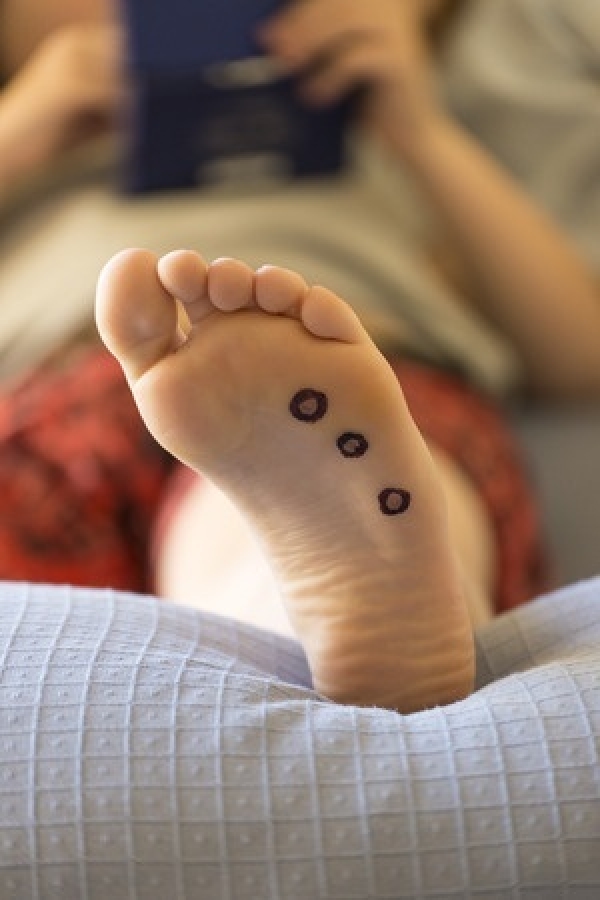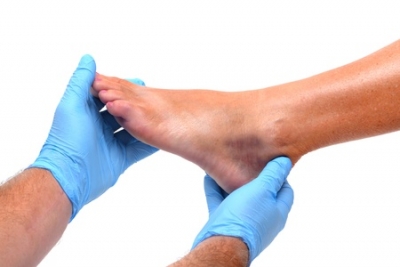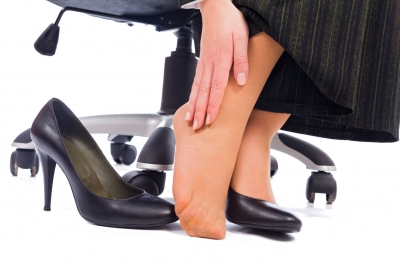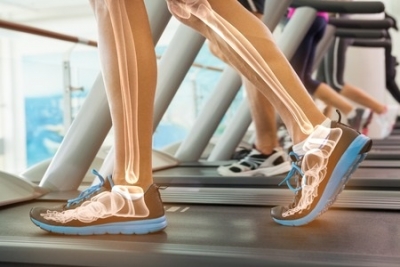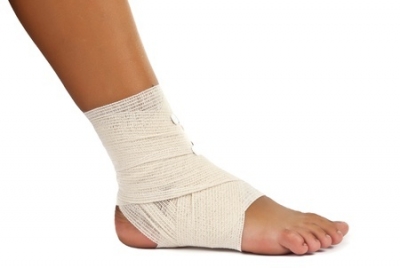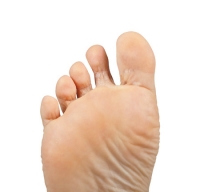Connect With Us
Blogs
Blog
Children categories
At Superior Foot & Ankle Care Center we know that diabetes doesn’t have to prevent you from living a full and active life. We treat many patients with this disease and we know it can have a big impact on the health of your feet. Diabetes impedes the circulatory and immune systems increasing the likelihood of infections and decreasing the body’s ability to heal. To make matters worse, neuropathy, a condition also commonly associated with diabetes, makes it difficult to perceive sensations like pain or heat which would signal a potential wound. The good news is there’s much you can do to protect your feet. In recognition of National Diabetes Awareness Month we’d like to focus on some particularly important areas:
Foot Care—Your feet can be both a recipient and an early warning system with regard to problems with diabetes. For that reason, inspecting your feet on a daily basis is essential. Changes in skin or nails, lumps, swelling, bruises, redness, blisters can all signal a potential problem developing. It’s critical that one of our foot doctors, Dr. Victoria Foley or Dr. Constance Omelas be informed of any unusual changes immediately. A good care regimen can also help decrease the risk of foot problems in diabetic patients. Wash feet with a mild soap in warm—not hot—water and dry completely, especially between your toes.
Shoes—Although well-made, properly fitted shoes can help reduce the risk of foot disorders in all patients, those with diabetes have specific concerns to address. Look for shoes that are well cushioned to reduce impact to the soles of your feet. Shoes should be laced and fit snugly (but not tight) to provide stability and limit side to side movement of the foot. If you have a toe deformity such as a bunion or hammertoe, special padding may be prescribed to prevent rubbing and friction which could lead to a corn or callus. Be sure the front of the shoe is roomy to prevent toes from being squeezed together.
Keep Feet Dry—Damp feet can lead to a fungal infection. If you tend to sweat profusely you can use a foot powder or even antiperspirant on the soles of your feet to reduce wetness. Change socks whenever you notice they are damp.
Healthy Lifestyle—Follow your doctor’s instructions for controlling your diabetes. Don’t smoke (it will further impede your circulation). Eat a healthy diet that is high in protein, vegetables and whole grains and limits saturated and trans fats and sugars. Exercise regularly for good joint health and weight control.
If you have additional questions about foot health and diabetes, contact our Long Beach office by calling: 562-420-9800.
Frequently patients will come to us at Superior Foot & Ankle Center to treat warts. What we find interesting is the amount of misinformation and misconceptions out there about this common condition. Below are some myths about warts:
MYTH: Warts only occur in people with poor hygiene.
FACT: Warts are caused by a virus that penetrates your skin and then forms the telltale fleshy bump. They do not result from lack of cleanliness in the patient but rather that the patient walked on a surface where the virus was present. Viruses thrive in moist, warm environments such as showers at the gym or the community pool. For this reason, it is recommended that patients wear flip flops or rubber shower shoes when walking around in these types of public places.
MYTH: You can’t catch a wart from another person.
FACT: Warts are actually quite contagious. They can spread from person to person and also to other parts of your own body. All you have to do is scratch a wart and then touch another place on your body and the virus spreads. If someone in your family has a wart on their foot you should take extra care cleaning the shower and never share towels, shoes, socks, nail clippers, emery boards or any other items that touch another person’s foot.
MYTH: You can get rid of warts with wart removers you find at the drug store.
FACT: While over-the-counter products do exist for removing warts they can damage surrounding healthy tissue and may be unsuccessful in eliminating warts. Warts can be very stubborn to remove and can sometimes recur after they appear to be completely gone. It’s best to let one of our podiatrists, Dr. Victoria Foley and Dr. Constance Omelas care for your wart. The foot doctor will be able to identify the type of wart and prescribe the proper treatment to safely remove it.
MYTH: Warts don’t really do any harm so you don’t have to remove them if you don’t want to.
FACT: While it’s true that warts are not generally dangerous or harmful, they can cause pain and discomfort, particularly if they develop on the heel or ball of your foot. Since they are also contagious, it’s best to get them removed as soon as possible. Left untreated warts can also grow in size and multiply on your foot.
If you have a wart, contact our Long Beach office for an appointment by calling: 562-420-9800.
At Superior Foot & Ankle Center we find that many patients do not fully realize the role the podiatrist can play in your foot and overall health. Our purpose is to provide acute and preventive care to your entire lower extremity (from the tips of your toes up to your knees). We have a wealth of treatment options available including pain relief, multiple therapies, custom orthotics, exercise and surgery to correct and improve foot discomfort associated with both age and activities, including sports injuries. In addition, in many cases the foot doctor is able to diagnose a larger, systemic issue from symptoms in your feet and can then collaborate with other health care professionals to care for the disorder.
Use the following as a guideline if you’re trying to decide if you should call the podiatrist:
- You experience sudden or increasing pain; chronic pain seems to be getting more severe or more frequent
- You notice abnormalities in your feet: swelling, changes in shape or size, bruising, lumps,
- Other non-painful symptoms: tingling, burning, itching, pins and needles, numbness
- Changes in skin (color, redness, scaling, flaking, sores, blisters, cracking) or toenails (discoloration, thickening, crumbling, peeling)
- Possible signs of infection: pus or discharge, redness or red streaks, tenderness, heat, fever
- You have any symptoms and have diabetes or other conditions that suppress the immune or circulatory systems—even the most minor symptoms can become major medical threats to these patients
If you said yes to any of the above symptoms or signs, contact our Long Beach office for an appointment by calling: 562-420-9800. Our foot and ankle surgeons, Dr. Victoria Foley and Dr. Constance Omelas will do a complete examination and help get to the bottom of your foot pain so that you can get back to the active lifestyle you love. Regardless of whether your foot disorder is common, such as athlete’s foot or an ingrown toenail or a more complex condition, starting treatment sooner rather than later will enable the foot doctor to use the least invasive methods and ensure the quickest cure.
At Superior Foot & Ankle Care Center we treat many women with foot problems that could have been avoided by choosing different shoes. Today, there are many attractive shoe designs that do not harm your feet. Short-term fashion choices can lead to long term foot health problems. Below are 3 types of shoes to avoid:
- High heels—shoes with high heels (2 inches or more) can cause a host of foot problems. First, the height of the heel can cause wobbling and instability which results in ankle sprains. High heels put extra strain on the muscles and ligaments of the ankle as they struggle to keep your foot in proper position. Continuing to wear high heels after a sprain is likely to set up a dangerous cycle of repeated sprains, increased weakness and eventually chronic ankle instability and pain. In addition, the design of high heels forces your toes forward, causing them to spend long hours cramped and squeezed. This increases the risk of bunions, hammertoes and other toe deformities.
- Stiff backed pumps—shoes with an overly hard heel counter can lead to a condition commonly referred to as “pump bump.” Officially known as Haglund’s deformity, a hard, bony enlargement forms on the back of the heel. When the back of pump rubs against the growth it causes irritation and inflammation. In some cases the bursa sac surrounding the deformity can become inflamed causing bursitis.
- Flip-flops—yes, these are comfortable and oh-so-easy to slip on and off but flip flops provide no support whatsoever for your feet. This increases the risk of your feet coming out of the shoe and getting cut or scraped and also the chances of twisting an ankle. The one exception to this is in gyms, public pools, spas and other places where covering your feet prevents contact with fungi and bacteria that can cause athlete’s foot, fungal toenail and
If a part of your foot, toe or ankle is causing you pain or you notice other symptoms such as bruising, swelling or redness, contact our Long Beach office for an appointment by calling: 562-420-9800. Our podiatrists, Dr. Victoria Foley and Dr. Constance Omelas will examine your feet and prescribe the correct treatment (in addition to changing your shoes) to relieve pain and prevent further injury.
The joints in your feet—and there are 33 of them in each foot, by the way—are what allow your bones to glide over one another enabling you to do essential activities like walking, jumping and running. As we age, the cartilage in our joints can naturally start to breakdown resulting in bone rubbing on bone and causing painful conditions such as arthritis to develop. This week we celebrate Bone and Joint Health Awareness Week and at Superior Foot & Ankle Care Center we want patients to take a proactive approach to the health of their joints because of the big impact it has on your feet and the rest of your body.
Preventing Joint Problems
Although it’s true that the conditions that affect our joints, such as gout, arthritis and osteoporosis are not completely preventable, there are steps that patients can take at any age that will help ensure joint health now and in the future.
Be Active—physical activity actually helps protect your joints in a few ways. First, exercising regularly or participating in a sport helps build and maintain muscle which supports your joints. Exercise also helps you stay flexible—with joints, the saying “use it or lose it” definitely applies. Another benefit of being active is it can help you lose or maintain a healthy weight. Being overweight puts significant strain on the joints of your feet and other lower extremities, causing them to deteriorate faster.
Eat Purposefully—your diet also plays a big role in maintaining a normal weight. Fortunately, many of the aspects of a well balanced diet also improve joint health: avoiding sugars, processed foods, fried foods and refined flours can also reduce inflammation. Some studies show that there are some foods that fight inflammation. These include: berries, cherries, certain nuts and fish and leafy greens like kale and bok choy.
Guard Against Injuries—if you take a survey of adults with arthritis, many people will attest to the fact that a site injured in youth (knee, ankle, foot) later became a site where arthritis developed. Always wear protective gear for sports and warm up and stretch before exercise.
If you do sustain an injury, contact our Long Beach office right away by calling: 562-420-9800 so our foot and ankle surgeons, Dr. Victoria Foley and Dr. Constance Omelas can examine your foot or ankle. Prompt treatment and complete rehabilitation are two ways to guard against future joint injury and disease.
At Superior Foot & Ankle Care Center many patients come to us with ankle pain and discomfort saying, “But I didn’t twist my ankle or fall—I don’t know why it hurts.” Chronic ankle problems can include the following symptoms:
- Stiffness
- Pain or soreness
- Feeling of instability—like the ankle is going to “give way”
- Swelling
These may be signs of osteochondritis, chronic lateral ankle pain, “weak ankles” or another chronic ankle condition.
What’s Behind the Pain?
Most often, chronic ankle problems affect patients who have had one or more ankle sprain injuries in the past, leaving them with scar tissue or nerve damage in the ankle. In many cases ankle sprains are either not treated promptly or rehabilitated fully, leaving the patient more likely to experience repeated sprains or ongoing ankle pain and discomfort. Other common sources of chronic ankle pain include: arthritis or other condition that causes joint inflammation or an undiagnosed ankle fracture.
Getting Relief
The first step is to have one of our podiatrists, Dr. Victoria Foley and Dr. Constance Omelas evaluate your ankle. The foot doctor will want to get a detailed medical history and will be particularly interested in knowing about any previous ankle injuries or problems. X-rays or other imaging studies may be made to get a more complete idea of the condition of your ankle.
Once the podiatrist has diagnosed your chronic ankle problem a treatment plan that best suits your condition and lifestyle can be developed. Treatment options may include one or more of the following:
- Anti-inflammatory or steroidal medications to relieve swelling and relieve pain
- Immobilizing the ankle to allow healing
- Physical therapy to improve range of motion and strengthen supporting muscles
- Ankle braces or supports
If you are suffering with ongoing ankle pain, stiffness or weak ankles, don’t assume nothing can be done about it. Make an appointment at our Long Beach office today by calling: 562-420-9800 and find out how you can get relief and resume the active lifestyle that you love.
At Superior Foot & Ankle Center we know the importance for your feet of maintaining a healthy weight. Obesity puts added strain on the muscles, joints and ligaments of your feet and is a risk factor for several foot disorders. September is Childhood Obesity Awareness Month and we want to help families create healthy habits now so that children will grow into healthy adults.
Contributing Factors
Thankfully, the incidence of obese and overweight children appears to have leveled off over the last decade after steadily rising for several decades before. However, we still have a long way to go. Nearly 1/3 of children ages 10-17 are overweight or obese. The lifestyle of the average child has changed dramatically from even 2 or 3 generations ago. Some reasons for the increased weight in young people include:
- Easy access to inexpensive, high calorie foods and sugary drinks
- To much time spent being sedentary and inactive
- Lack of sleep
- Increase in cost of healthy foods
- Decrease in community-oriented opportunities for physical activity
If you consider the number of “screens” most children own, the amount of pre-packaged and process food they consume and the decrease in time and opportunity to simply play outdoors or in the neighborhood, it’s easy to see how the increase in overweight children has occurred.
Ways to Help
There are many options for helping young people attain and maintain a healthy weight, including:
- Get rid of junk food and sugary sodas and snacks. If it’s too much for your family to go “cold turkey,” you can start by swapping in healthier versions of their favorite: frozen yogurt for ice cream, granola bars for cookies, baked chips instead of fried.
- Cook more meals at home. This way you control the ingredients. This is also a great opportunity to get your children involved in learning about healthy meals and helping to plan, shop and cook them.
- Get everyone a water bottle and encourage them to keep it filled. Drinking enough water everyday helps control hunger and will take the place of sweet drinks.
- Make fitness and exercise a priority for the whole family. It doesn’t have to be boring! Ice skating, rollerblading, skiing, hiking, bicycling and team sports are all good and fun choices.
By preventing obesity now when your children are young you will be helping them avoid serious medical conditions down the road which can impact their feet and entire body: diabetes, heart disease, arthritis and more. If you have additional questions about how to be proactive about your child’s foot health, our podiatrists, Dr. Victoria Foley and Dr. Constance Omelas will be happy to answer them. Contact our Long Beach office by calling: 562-420-9800.
Are you taking your toes for granted? At Superior Foot & Ankle Care Center we find many patients do. Your toes help you maintain your balance and enable you to push off when your walk. If toes hurt or become deformed it can lead to serious disability. Below are 5 simple exercises that will keep toes flexible and help ease foot pain for conditions such as hammertoe, bunions, toe cramps, plantar fasciitis and more:
- Big Toe Pulls: In a seated position, place feet next to each other and place a thick rubber band around the two big toes. Pull them apart, moving each toe toward the little toes. Hold the position for 5 seconds. Repeat 10 times.
- Put a Cork in It: Take small corks and place them between each of your toes on one foot. Squeeze toes together and hold for 5 seconds. Do 10 repetitions with each foot.
- Marble Pick-Up: Sitting in a chair spread 20 marbles on the floor in front of you. Pick up each marble, one at a time, with the toes of one of your feet and deposit them in a bowl. After you pick up all 20 marbles, spread them back on the floor and pick up with the other foot.
- Towel Curls: While sitting, spread towel on the floor in front of you. Using the toes on both your feet pick up the towel by curling it toward you. Repeat 5 times. Relax toes and rest a few seconds between repetitions.
- Golf Ball Massage: When you’ve finished the above exercises, reward your feet by place a golf ball on the floor and rolling it under each forefoot for 2-3 minutes.
Of course toe exercises are not a cure or solution to chronic foot pain. If you are experiencing discomfort in your feet or toes, make an appointment at our Long Beach office so that our foot doctors, Dr. Victoria Foley and Dr. Constance Omelas can examine your feet and arrive at a correct diagnosis and appropriate treatment for your foot or toe pain. Contact us by calling: 562-420-9800.
Each year a quarter of all adults 65 and older fall. For some this will mean a serious injury that leads to disability or even death. For others, the injury isn’t so much physical as mental as they become fearful and depressed and unwilling to life the active lifestyle they once loved. In honor of Falls Prevention Day which occurs on September 22nd, we at Superior Foot & Ankle Center want to let patients know that they can decrease the risk of falling. Here’s how:
Build up strength and balance—regular exercise—walking being one of the best options—helps keep muscles and bones strong and keeps ligaments and tendons flexible. Feet that are functioning well are less likely to stumble. There are also several types of exercise, such as Tai Chi, that specifically focus on increasing balance. Look for one in your community.
Eat for strong bones—talk to your doctor about your bone density. It is now known that many people don’t fall and break a hip, but rather the hip breaks and they fall. Your doctor can tell you how much calcium you should have on a daily basis. Diets rich in dairy products, leafy greens (like spinach and kale) and certain fish (sardines, salmon, perch) will help you reach your daily calcium goal. Fortified juices and cereals as well as calcium supplements are also available.
Do a home inspection—take a walk through your home with a critical eye for fall hazards. Clear clutter from the floors, remove loose throw rugs and be sure stairs have railings on both sides. Bathrooms should have rails for showers and toilets if necessary and non skid treatments on the floor of the shower and tub. Be sure all areas of the home are well lit (inside and out).
Don’t procrastinate when it comes to healthcare—stay current with medical appointments. Regular eye exams will reduce the risk of falls due to poor vision. Keeping with your schedule of medical appointments will help ensure that your medications are appropriate for your weight and condition and that there are no interactions between prescribed drugs that can cause dizziness or blurred vision.
Of great importance is not putting off making an appointment with our podiatrists, Dr. Victoria Foley and Dr. Constance Omelas, at our Long Beach office if you are experiencing foot, toe or ankle pain, as well as monitoring existing podiatric conditions. Discomfort in the lower extremities can cause you to compensate and walk in unnatural ways that can lead to trips and falls. Contact us by calling: 562-420-9800.
Although the risk for athlete’s foot is high during the summer due to the fact that patients go barefoot more often in public places, at Superior Foot & Ankle Care Center we see just as many cases as we move into the fall. Part of the reason for this is that the fungi that causes this infection (also known as tinea pedis) love warm, moist, dark places—like inside closed shoes and sweaty socks.
How do You Know if You Have It?
The symptoms of athlete’s foot are severe itching, burning and redness, along with dry scaly skin. The infection often begins between the toes but can also develop on the arches, soles or the sides of the feet. Left untreated, blisters may form and the condition can progress from annoying to painful. What’s tricky, however, is that the symptoms of athlete’s foot can mimic other conditions, such as psoriasis. In addition, there are different fungi that cause athlete’s foot, which may affect treatment. For those reasons, it’s important to get a skin rash on your foot looked at sooner rather than later. Our podiatrists, Dr. Victoria Foley and Dr. Constance Omelas will examine the skin on your feet and make an accurate diagnosis of the condition.
Treatment and Prevention
Both topical ointments as well as oral medications are available to treat athlete’s foot. The foot doctor will prescribe the treatment that will be most effective depending on the type and severity of your infection. Of course, the best scenario is not to get athlete’s foot in the first place! Some tips for avoiding athlete’s foot include:
- Do not share shoes, socks, towels or any other items that touch another person’s feet.
- Keep your feet from coming in contact with fungus by wearing shower shoes or flip flops in gyms, locker rooms, showers and other public places where people walk barefoot.
- Keep feet dry. Change your socks more than once a day if you tend to perspire heavily.
- Wash feet daily and dry completely, being sure to get the space between the toes. Apply a foot powder before putting on socks to help keep feet dry.
If you are concerned that you may have contracted athlete’s foot, contact our Long Beach office for an appointment by calling: 562-420-9800.
More...
Most of the time we don’t think much about our toes. They are, however, quite necessary for providing the balance and assistance needed to support the weight of your body and for common activities like walking and running. At Superior Foot & Ankle Care Center we find patients pay attention to their toes when they hurt and stop functioning as they should. Below are some common reasons for toe discomfort:
Hammertoes—with this condition, which can be caused by a genetic muscle problem, faulty foot mechanics or an abnormal bone length, one or more toes curls downward causing the namesake “hammer” appearance. In the early stages, the toes remain flexible but if left untreated they will become rigid, unable to be straightened. Corns, calluses and more severe disability can occur. There are a number of conservative and surgical treatment options available depending on the severity and progression of hammertoes.
Toe Spurs—this is a bone spur that occurs in your toe. It may form as part of another foot problem and can cause quite a bit of pain when walking. Usually a minimal incision surgery is needed to eliminate the spur.
Curled Fifth Toe—usually an inherited condition, the pinky toe curls downward and moves under the next toe. This results in your bearing weight on the side of your toe instead of the bottom—ouch! In addition, curled fifth toes cause nail problems and corns. This problem can be surgically corrected.
Turf Toe—this is actually a sprain of the joint at the base of the big toe. It is usually caused by a sudden pushing off injury or a “jamming” of the toe, such as when a player’s foot gets stopped on artificial turf but the rest of the body continues moving forward. Turf toe can also be caused or exacerbated by repetitive pushing off actions common to sports such as football.
As you can see, the causes of toe trouble are varied and the treatment will depend on the diagnosis. For this reason it’s essential that you let one of our podiatrists, Dr. Victoria Foley and Dr. Constance Omelas, examine your toes and find out the cause of your pain. To get relief from your toe pain contact our Long Beach office sooner rather than later for an appointment by calling: 562-420-9800.
Chances are if you haven’t had sesamoiditis, you may not have any idea what it is. However, at Superior Foot & Ankle Center we often find that for patients suffering from pain in the ball of the foot, sesamoiditis is the cause.
What are Sesamoids?
Sesamoids are a unique structure in the body. They are tiny bones that are embedded in a tendon and are not connected to other bones. They are only found a few places in the body and your feet are one of them. Two sesamoids are located on the bottom of your foot at the base of the big toe. They act kind of like pulleys in the tendon, enabling it to move more easily and helping the big toe with pushing off.
Too Much Pressure
Due to their location and function in the foot sesamoids are exposed to excessive amounts of pressure and force. They can become over stressed or even injured from activities such as running and other sports, dancing, jobs that require you to be on your feet all day and having high arches or wearing high heels frequently. When the sesamoids become inflamed and irritated that is the condition of sesamoiditis.
Diagnosis and Treatment
In addition to pain in the ball of the foot, patients with sesamoiditis may also experience pain at the base of the big toe as well as swelling and bruising in that area. The big toe may be stiff and difficult to bend. Our podiatrists, Dr. Victoria Foley and Dr. Constance Omelas, will want to examine your foot, paying particular attention to the big toe. Digital x-rays (which can be done right in our Long Beach office) and other imaging studies may be needed to confirm the diagnosis.
There are a number of treatment options available for sesamoiditis, depending on the extent of the condition, including:
- Over the counter anti-inflammatory medications or steroid injections to help reduce pain, swelling and inflammation
- Bracing, taping or strapping the toe to relieve pressure and allow healing
- Wearing soft-soled, low-heeled, cushioned footwear.
- Orthotics
- Physical therapy
If you are experiencing symptoms of sesamoiditis, stop any activities that cause pain and contact us for an appointment by calling: (562) 420-9800.
Did you know that August 17th is National I Love My Feet Day? At Superior Foot & Ankle Center we can think of no better way to tell your feet you care then by buying shoes that fit properly and are good for your feet. Many common foot problems can be avoided by wearing the correct shoes for your feet. Here are some tips on shoe shopping:
- Buy shoes based on quality of construction and materials that are designed for the health of your feet not on fads and appearance.
- Be sure any shoes you choose take current foot problems you have into consideration. At your next checkup with our podiatrists, Dr. Victoria Foley and Dr. Constance Omelas, ask if there are special features you should look for or avoid when buying shoes. In many cases, such as with bunions, hammertoes, flat feet or high arches, the foot doctor can make recommendations about shoe design that will decrease discomfort and help prevent a foot condition from getting worse. In some cases, a custom orthotic device may help shift pressure away from an area that hurts. If the podiatrist prescribes an orthotic be sure to bring it with you to try on with the shoes you are considering buying.
- Get your feet professionally measured. Feet can change size as you age. It’s not uncommon to find that one of your feet is larger than the other. You should always buy shoes to fit the bigger foot. Also, don’t assume once you know your size that you all brands will fit the same. Always try on shoes before purchasing.
- Heel heights of 1 inch or less are best. The higher the heel, the more pressure that is exerted on the forefoot. Avoid pointy shoes and those with narrow toe boxes.
- Shop for shoes at the end of the day. That’s when your feet are their largest and most swollen.
- Run your hand around the inside of both shoes to be sure there is no loose stitching or rough spots that might rub on your skin.
- Don’t rush! Try on both shoes and take some time to walk around the store to make sure that shoes fit well and are comfortable from the moment you leave the store.
If you have questions about other foot health care issues contact our Long Beach office by calling: 562-420-9800.
If you’re packing for a summer trip, your feet may not be the first thing on your mind, but at Superior Foot & Ankle Care Center we want to remind patients that if your feet are hurting on vacation, you won’t enjoy yourself. The good news is your feet won’t need their own bag, just a few small items that can have a big impact on comfort, health and safety of your feet. Here’s what to bring:
- Moleskin—it’s a good idea not to bring brand new shoes that you haven’t worn before on a vacation. Chances are you’ll be doing more walking than usual and when you’re away from your closet is not the ideal time to discover that the shoes you brought are uncomfortable. Sometimes, however, even previously comfortable shoes can start to rub if it’s especially hot and your feet are sweaty from the increased activity. Moleskin can save the day. Put a small piece on the part of your foot that is feeling irritated and it will hopefully help you get through the day without a blister. Of course, you should still change your shoes as soon as possible.
- Sunscreen—this is probably already in your travel bag, but make sure you remember to apply it to the tops and bottoms of your feet as frequently as you apply to the rest of your body. Don’t forget to reapply after swimming.
- Emery board and nail clippers—a rough nail can become torn and painful. Keep an emery board with you for filing and bring along your nail clippers too. Remember to clip toenails straight across to help prevent ingrown nails from forming.
- Extra socks—if your feet tend to sweat excessively or you know you’ll be in a warm place where you’ll be doing activities like hiking or sightseeing, change your socks as soon as you feel that your feet are damp. This will help prevent a case of athlete’s foot from becoming your vacation souvenir. Fungal and bacterial infections thrive in dark, damp places.
- Flip flops—use these around the pool or at the beach to prevent feet from coming in contact with fungi in public places. Don’t wear these as your everyday shoes however, or you risk injury and other painful foot conditions such as plantar fasciitis and flat feet.
If you do injure your foot while you are away be sure to seek treatment promptly and follow up by contacting our Long Beach, CA office for an appointment when you return. Our podiatrists, Dr. Victoria Foley and Dr. Constance Ornelas will want to check your foot and be sure that it is healing properly.


